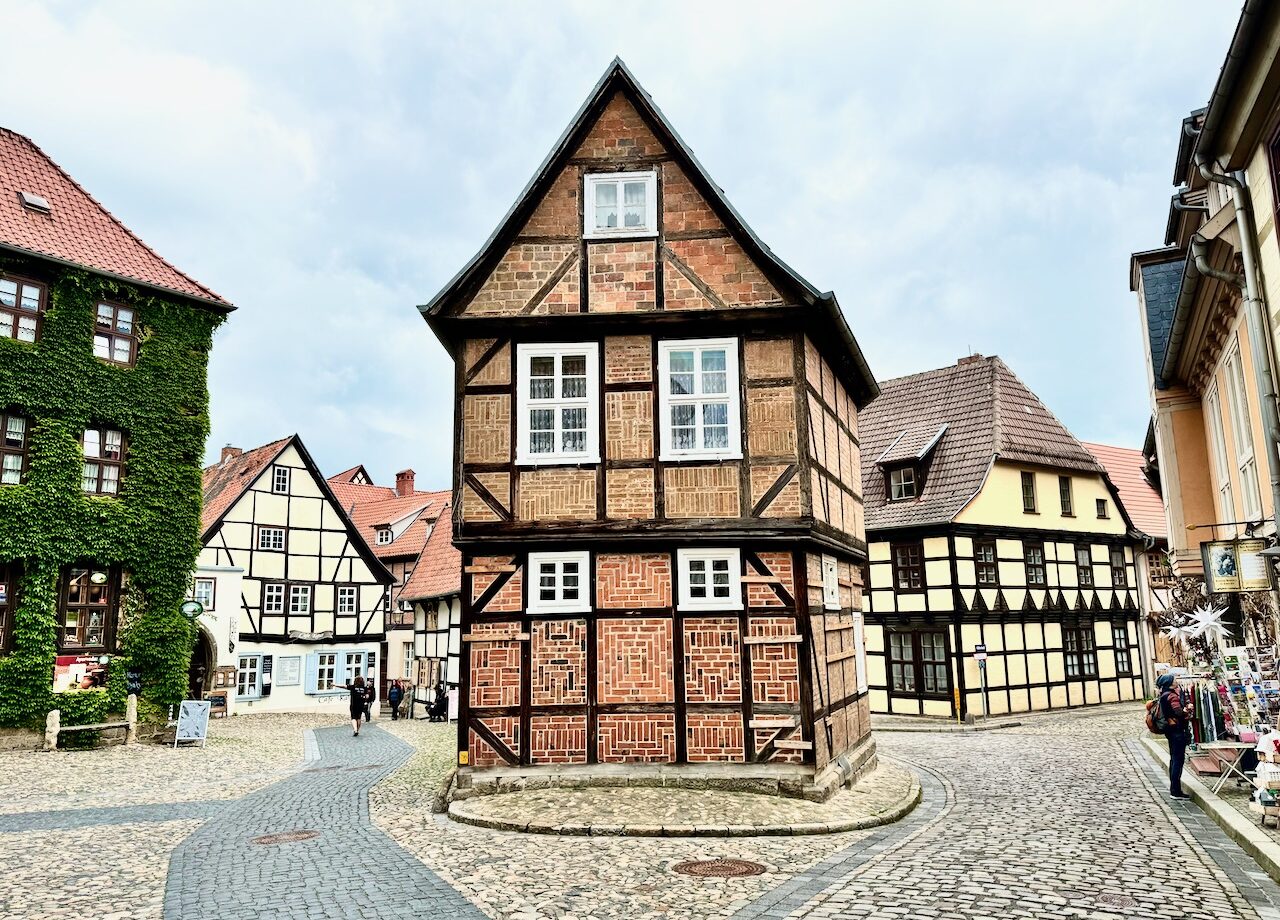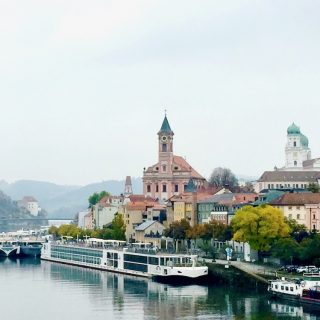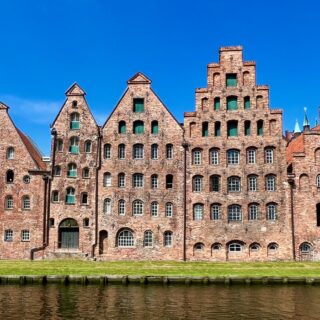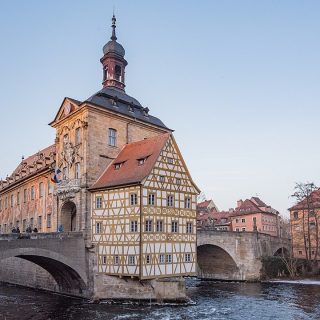To be honest, I’d not heard of Quedlinburg until I started planning a trip around central Germany. I clicked on its name on a map by chance and noticed some beautiful images of its old town. A bit more research revealed that it’s a UNESCO World Heritage Site. I didn’t have to think twice about adding it to my itinerary! And I’m so glad I did as Quedlinburg is one of the most beautiful medieval towns in Germany that I’ve ever visited. Nestled in the northern edges of the Harz Mountains of Saxony-Anhalt, Quedlinburg offers a unique journey through time with its well-preserved medieval and Romanesque architecture, cobblestone streets, and charming town squares. There are numerous things to see in Quedlinburg, all of which can easily be visited on a leisurely walk around the old town.
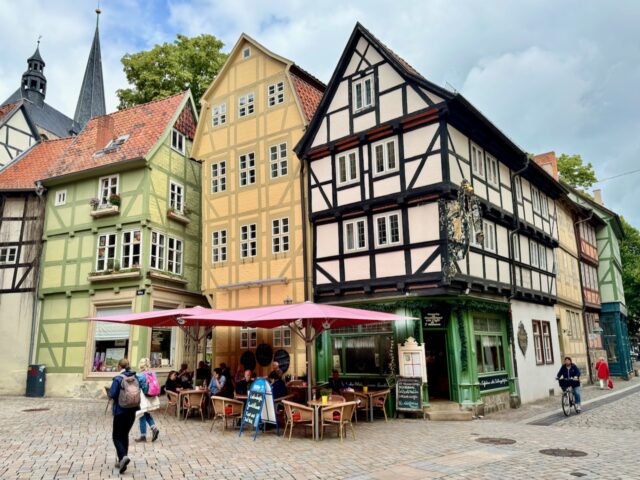

A (very) brief history
Quedlinburg’s history dates back over a thousand years, with its roots intertwined with the founding of Germany. It was first mentioned in 919 AD, when the Duke of Saxony Henry I was crowned in this area and established the Palatinate of Quedlinburg. In 936 AD, it became the seat of a convent (later Quedlinburg Abbey) founded by King Henry I’s wife, Matilda. Emperor Otto I, and subsequent Emperors, granted the town special rights and privileges, making it an important political, religious and trading centre. In 1426, the town joined the Hanseatic League of northern European merchant cities.
Quedlinburg architecture
Quedlinburg’s most striking feature is its architecture. The town boasts over 1,300 half-timbered houses, representing various styles from the 14th to the 20th century. According to UNESCO: The number and high quality of the timber-framed buildings make Quedlinburg an exceptional example of a medieval European town. The Collegiate Church of St Servatius is one of the masterpieces of Romanesque architecture.
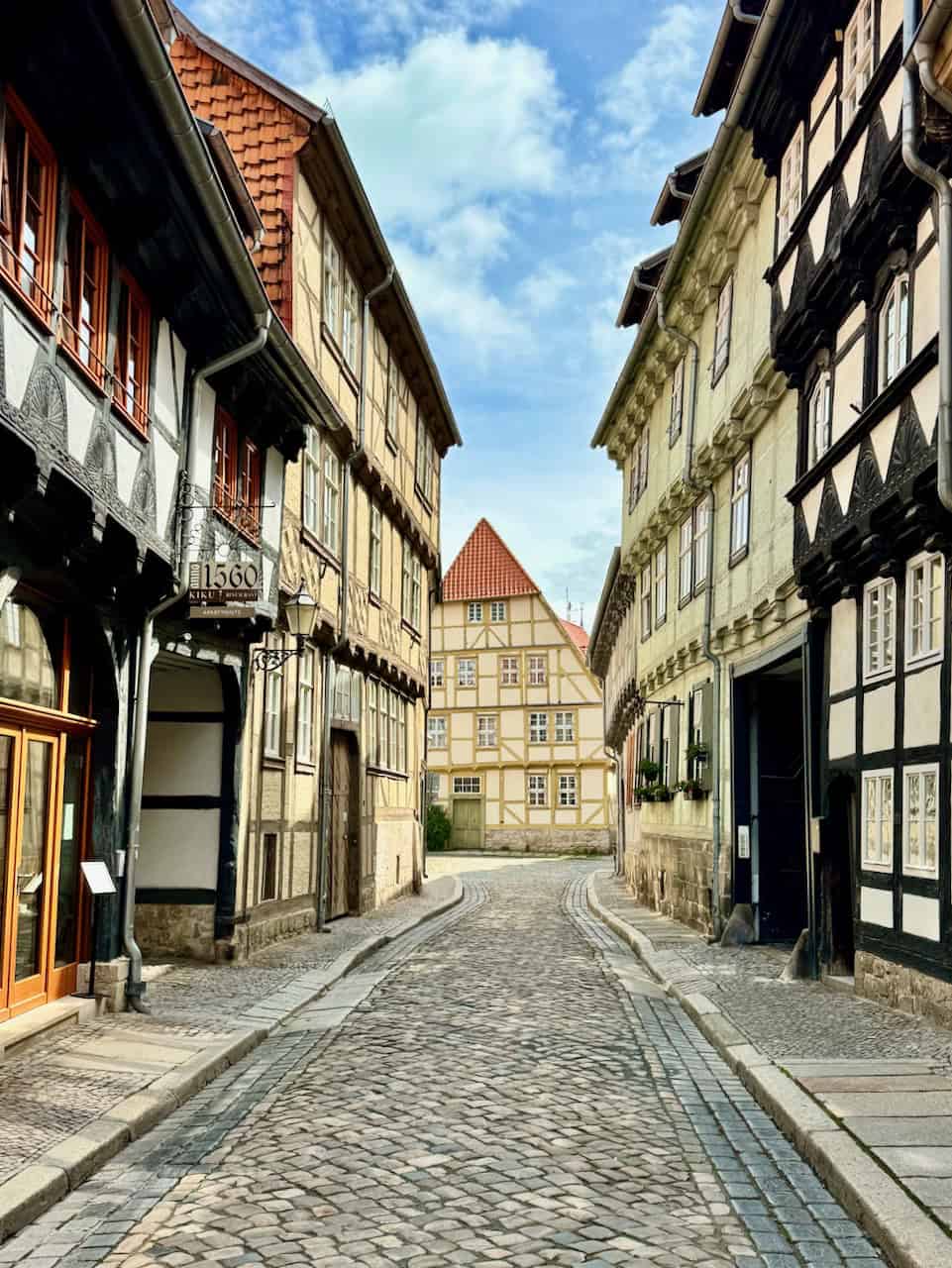
The restoration of Quedlinburg’s historic buildings has been a meticulous and ongoing process. Significant efforts were made to preserve and restore the town’s architectural heritage following the German reunification in 1990. Many buildings, once neglected, have been carefully renovated to reflect their original glory. This dedication to preservation ensures that Quedlinburg remains a living museum, where visitors can step back in time and experience the town’s historical significance firsthand.
Things to see in Quedlinburg on a walk around the old town
Beautifully preserved medieval towns is one of my favourite reasons to visit Germany and Quedlinburg is simply exceptional. Exploring Quedlinburg was like walking through a fairy tale! I had to pinch myself several times as I couldn’t believe what I was seeing – a simply magical scene awaited around every corner! I started my walk in the morning so there weren’t many other tourists around. This tranquility only added to the enchanting experience. I had to constantly remind myself to put my camera down and just enjoy the ambiance!
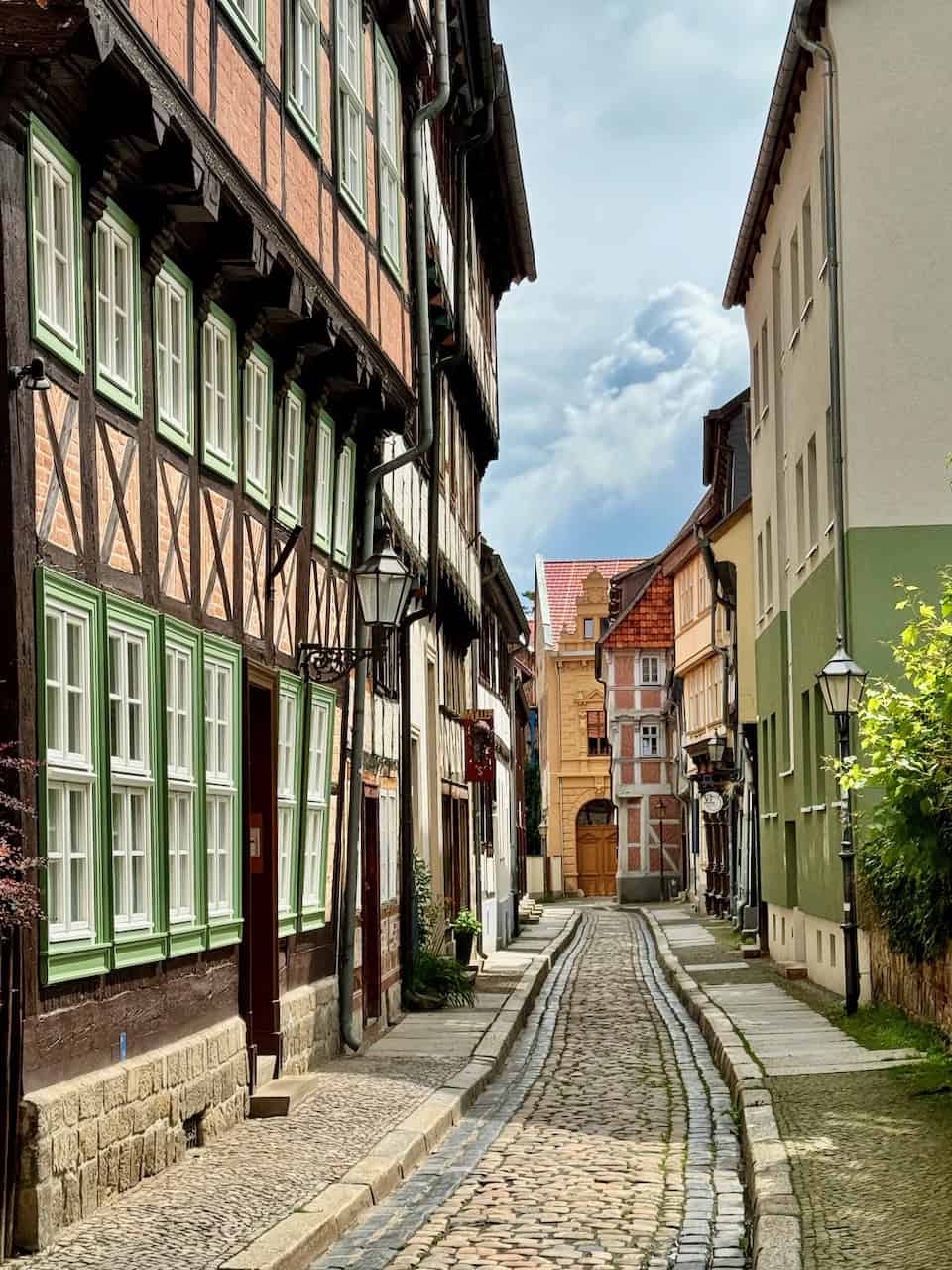
The old town sits below a sandstone cliff that’s topped by the impressive castle and abbey. Quaint half-timbered houses of different colours and styles line the town’s winding, cobbled streets, making a simple stroll an amazing experience. Here are the top things to see in Quedlinburg:
I recommend joining a guided tour to fully appreciate the town’s history and architecture. Wander through the narrow streets lined with half-timbered houses, visit the castle and abbey, and take in the serene beauty of the castle gardens. This walking route can easily be done in a day.
1. Quedlinburg Castle and Abbey
The Castle and Abbey complex, perched on a hill overlooking the town, is one of the top things to see in Quedlinburg. The Romanesque Collegiate Church of St. Servatius, part of the abbey complex, is renowned for its stunning architecture and the treasure of Quedlinburg, a collection of religious artifacts. The castle and the adjacent gardens offer panoramic views of the town and surrounding countryside.
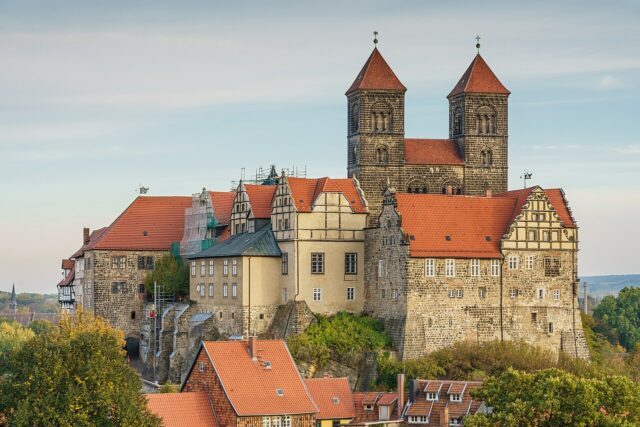
2. Schlossmuseum (Castle Museum)
Within the castle complex, is the Castle Museum that showcases Quedlinburg’s long history. You’ll learn how the castle and abbey complex was developed during the reign of Henry I in the 10th century. The lavish interiors are also worth seeing.
3. Schlossberg
The Schlossberg (Castle Hill) area surrounding the castle complex is full of interesting and beautiful timber-framed buildings.
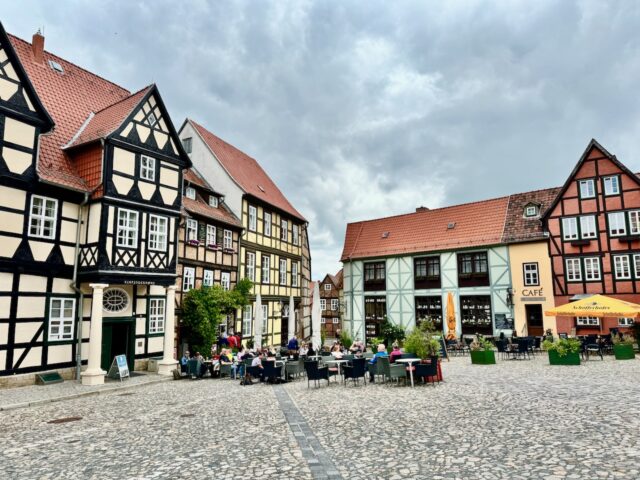
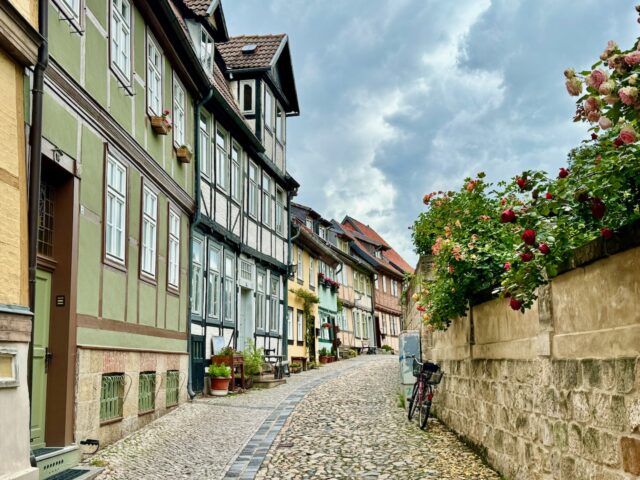
4. Finkenherd
Finkenherd is definitely one of Germany’s most iconic rows of half-timbered houses. There are several beautiful, coloured houses with pointed roofs. It’s said that this is the spot where the Duke of Saxony Henry I first learned that he would be crowned King.
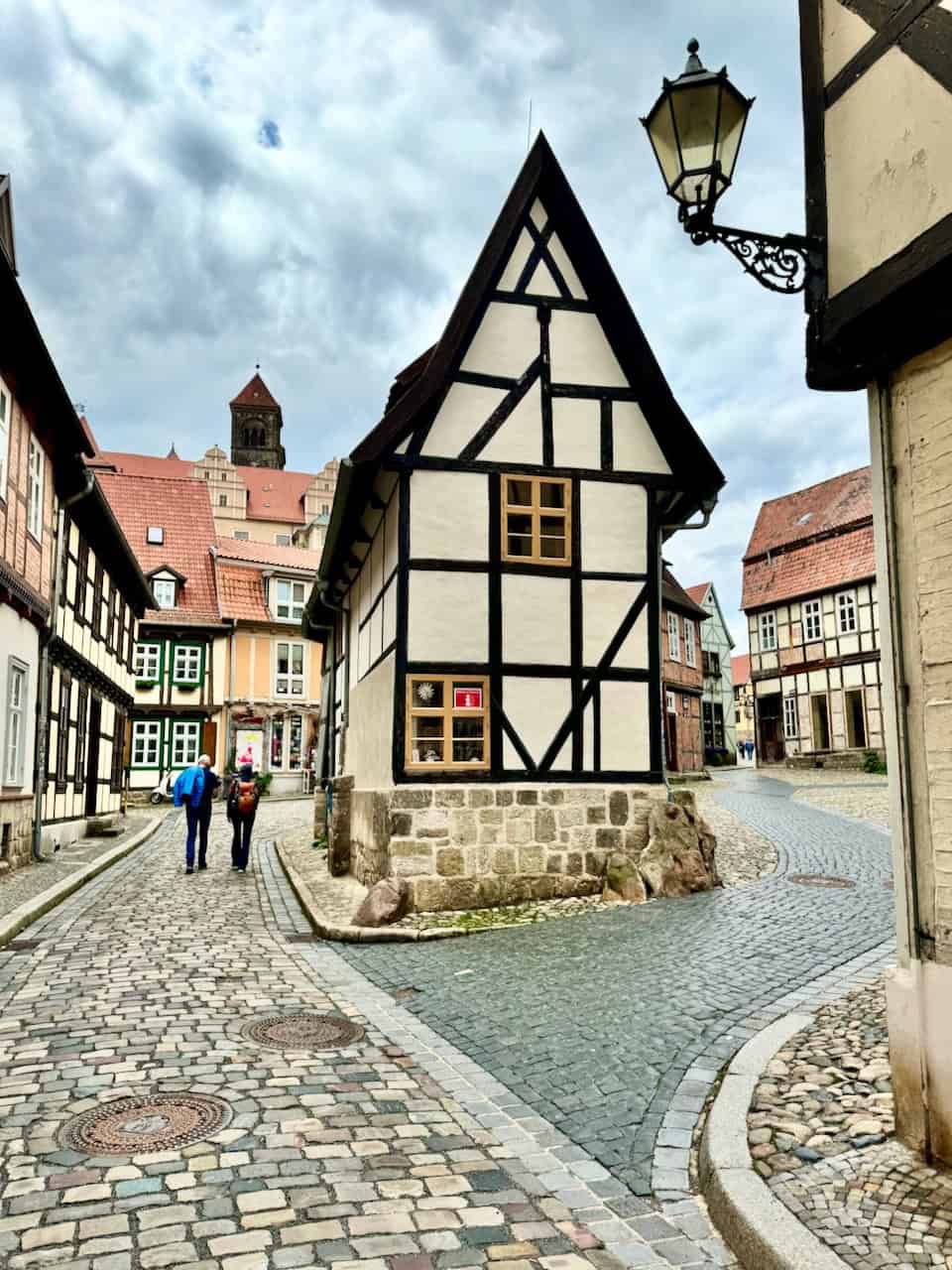
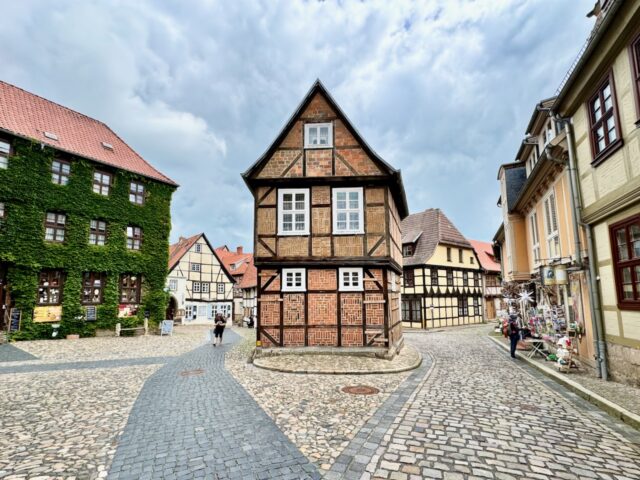
5. Market Square
The town’s market square is another architectural gem, featuring the Rathaus (town hall), a 13-14th century Gothic structure adorned with ivy and detailed carvings.
On one side of the Market Square, you’ll find the monument to the Münzenberg musicians. Erected on the market square in 1976, it shows four musicians (formerly Bohemian residents of Münzberg).
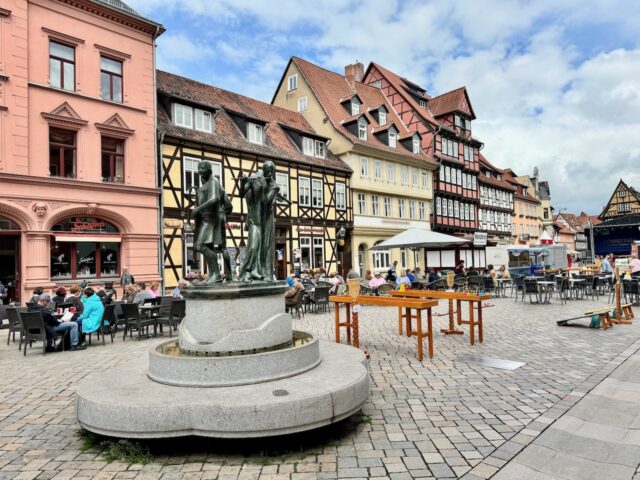
6. Market Church
Nearby, the 10th century Church of St. Benedict (or Market Church), with its distinctive twin towers, adds to the historical ambiance with its Romanesque stonework. You can even climb one of its towers for lovely views of the old town.
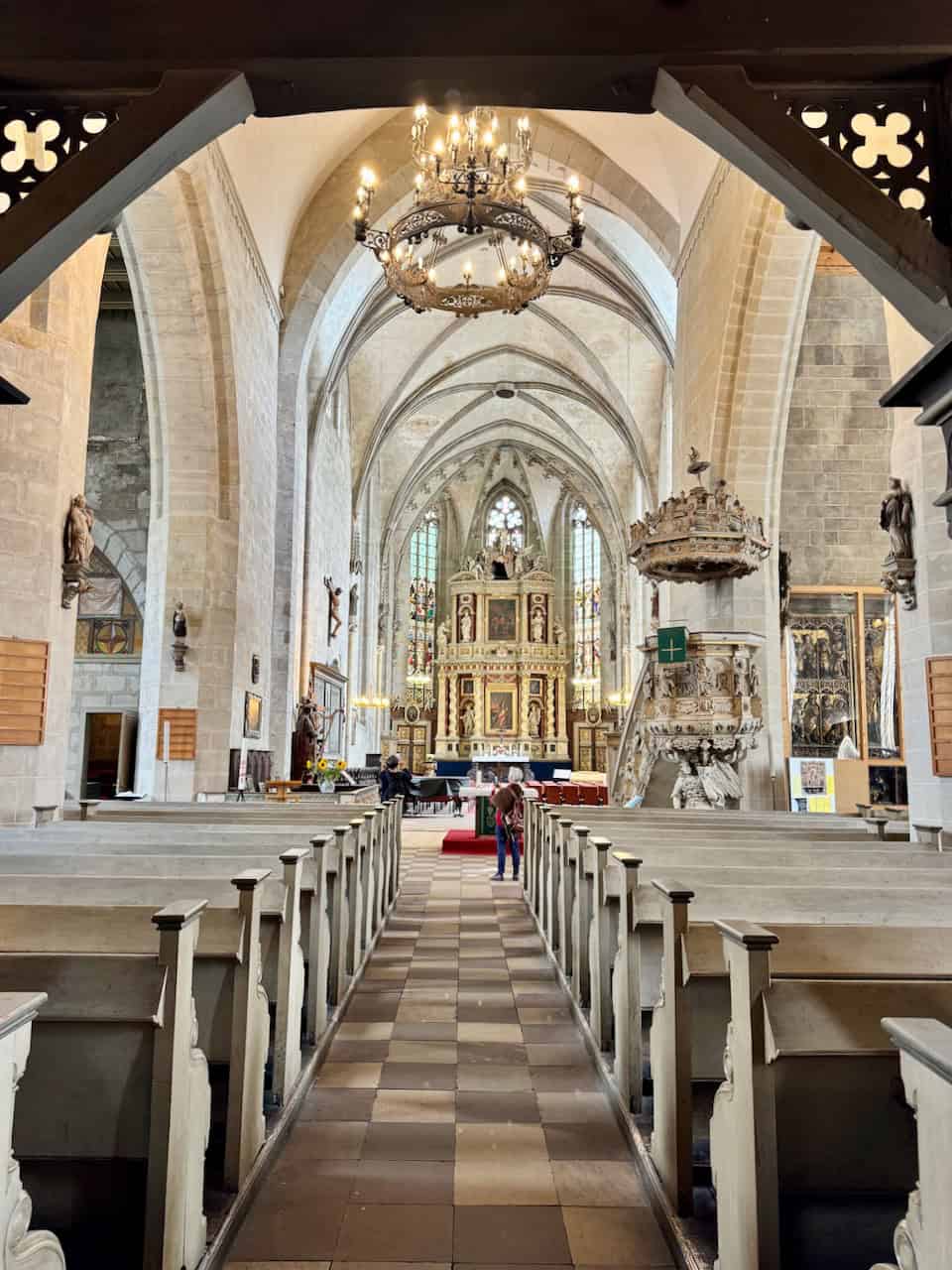
7. Fachwerkmuseum Ständerbau Quedlinburg (Half-timbered Museum)
Located in a 14th century half-timbered house, one of the oldest in Germany, this small museum shows the development of half-timbered architecture across 600 years.
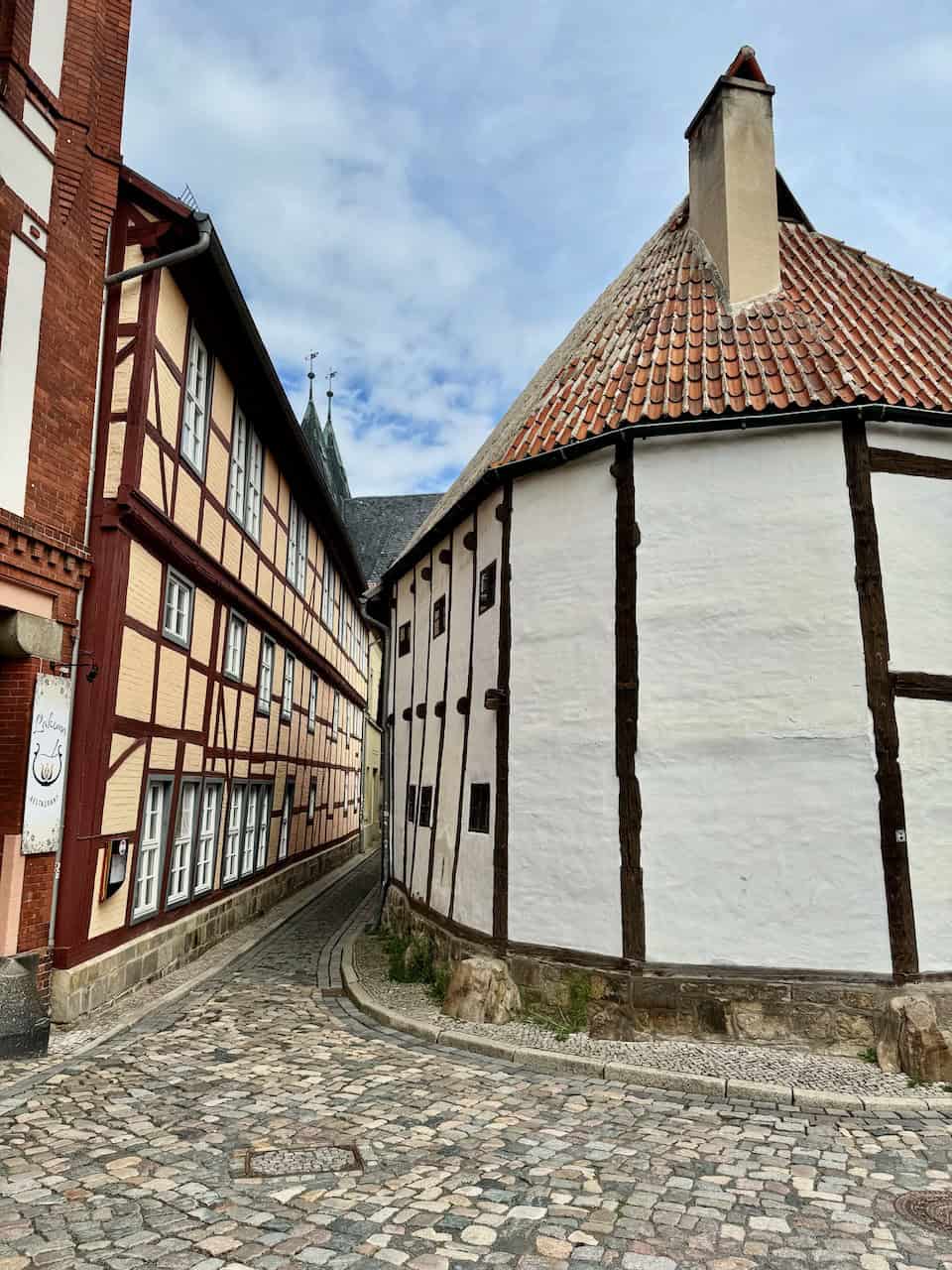
8. Mühlgraben
The ‘Mill Canal’ (or literally translated, ‘mill ditch’) traverses the centre of Quedlinburg and passes numerous historic monuments. In the Middle Ages, ten water mills lined the canal, resulting in its name Mühlgraben or ‘Mill Canal’.
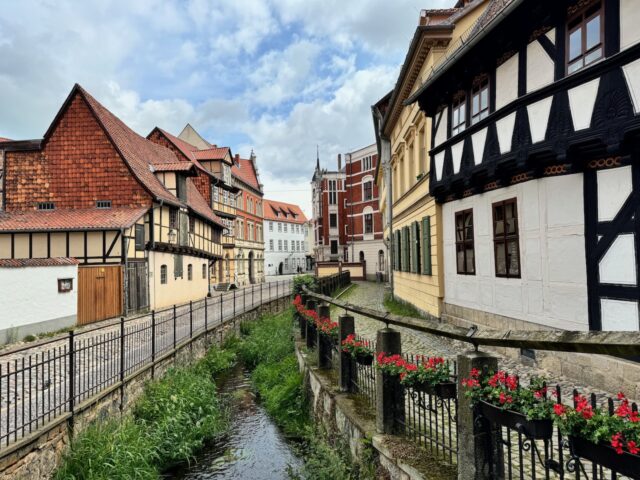
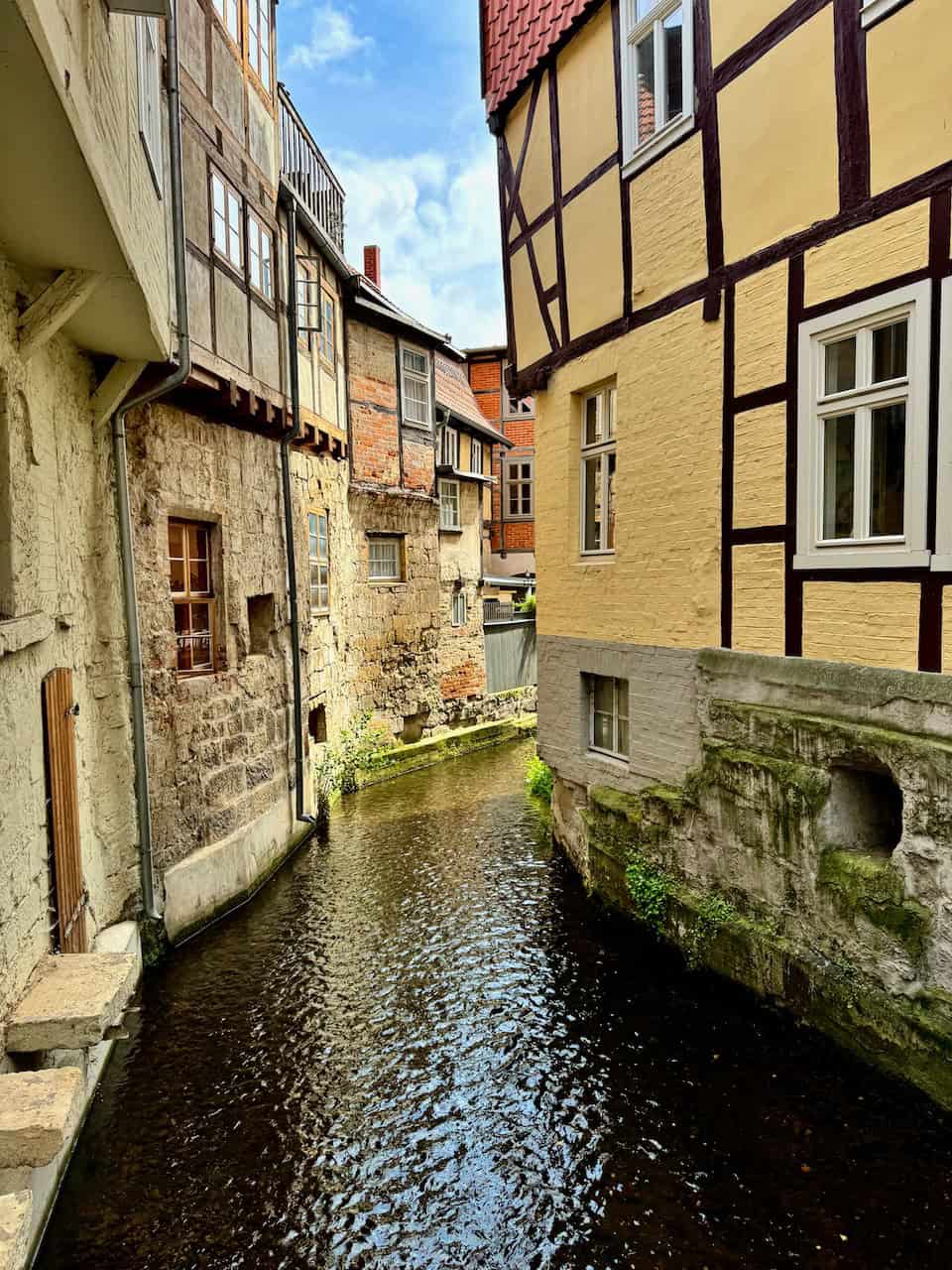
9. Höllenhof and Schuhhof
Höllenhof and the nearby Schuhhof are perfect examples of the stunning medieval architecture in Quedlinburg. These streets and partially hidden alleys are full of gorgeous houses and folklore.
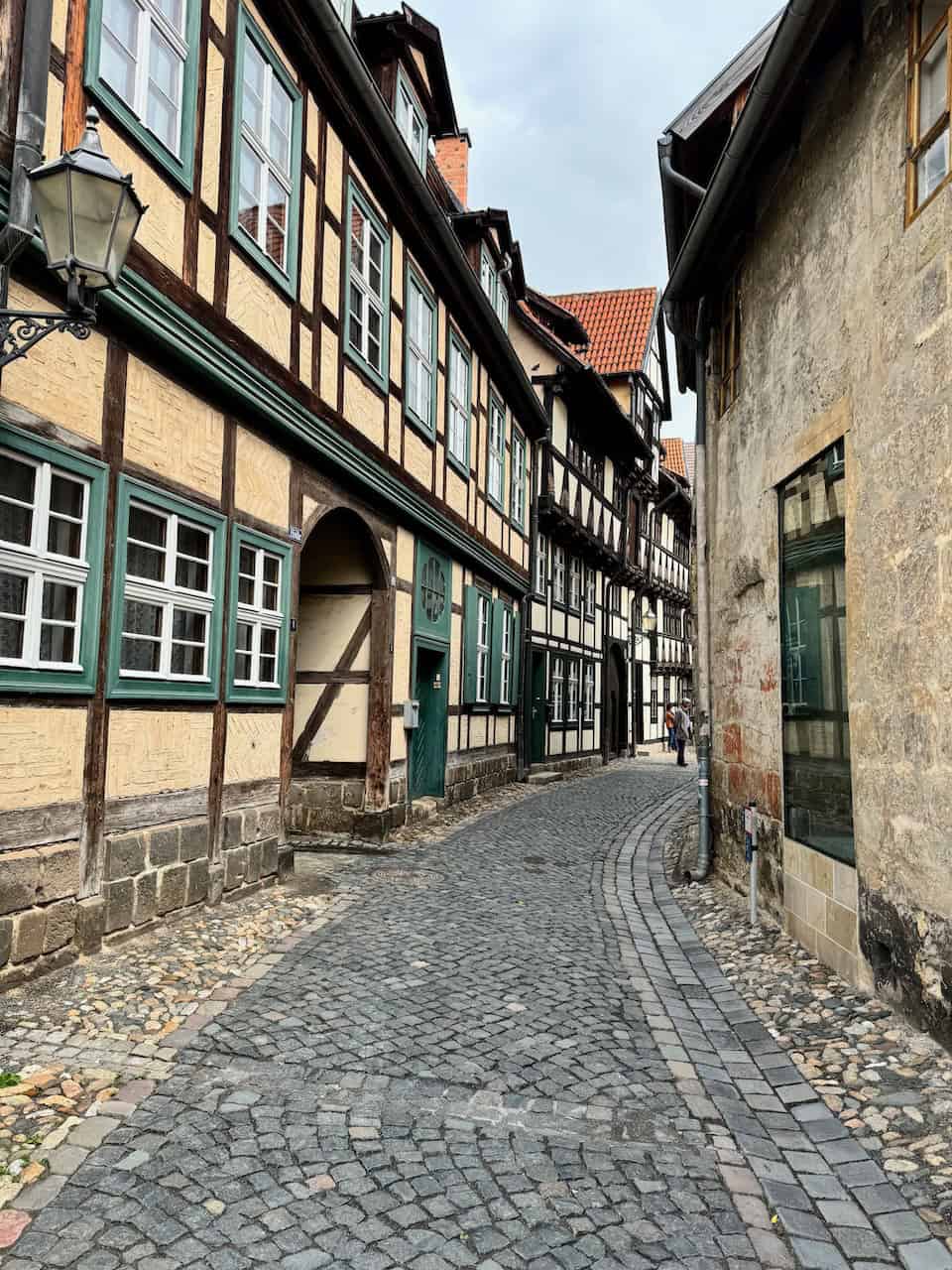
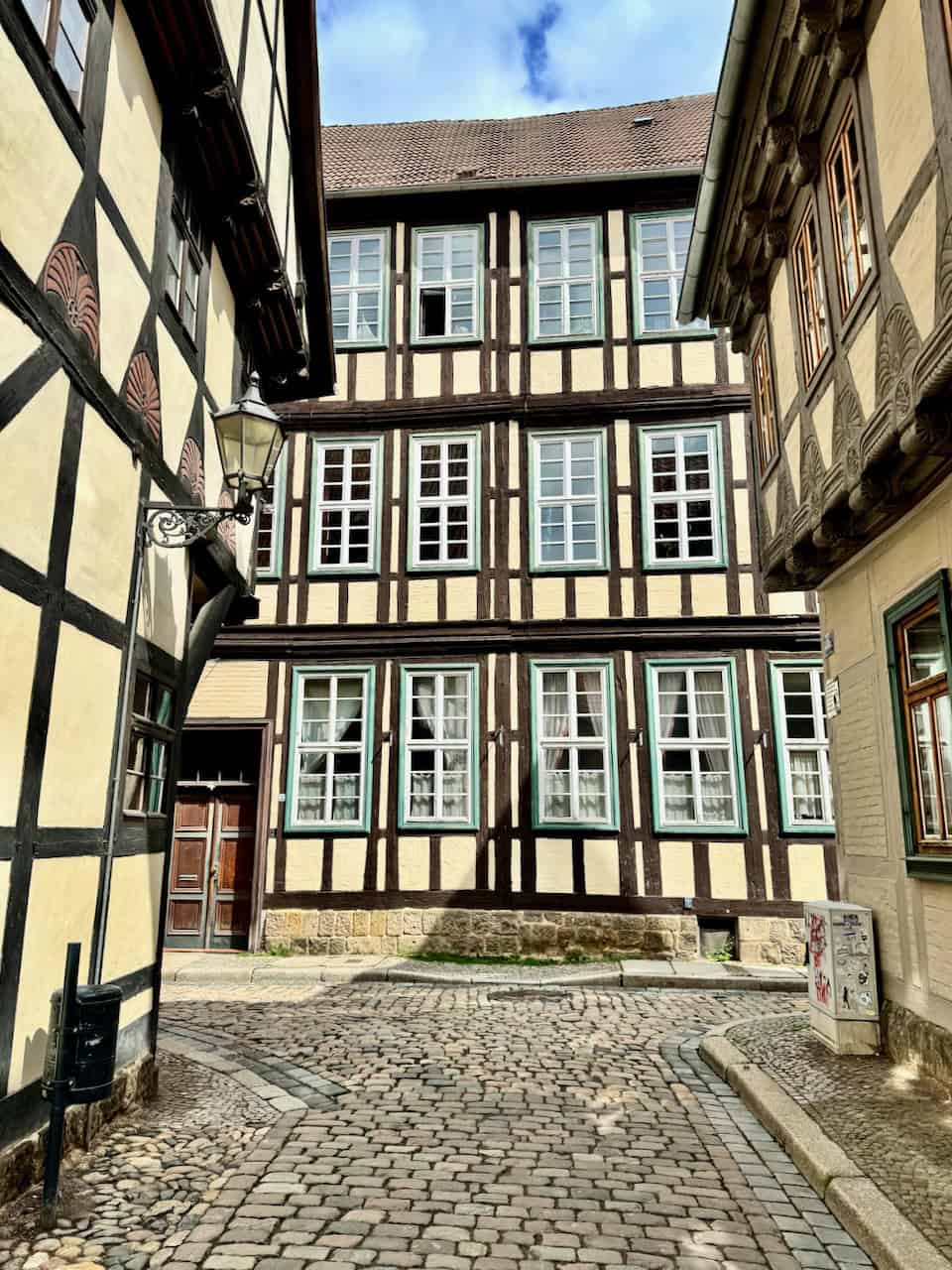
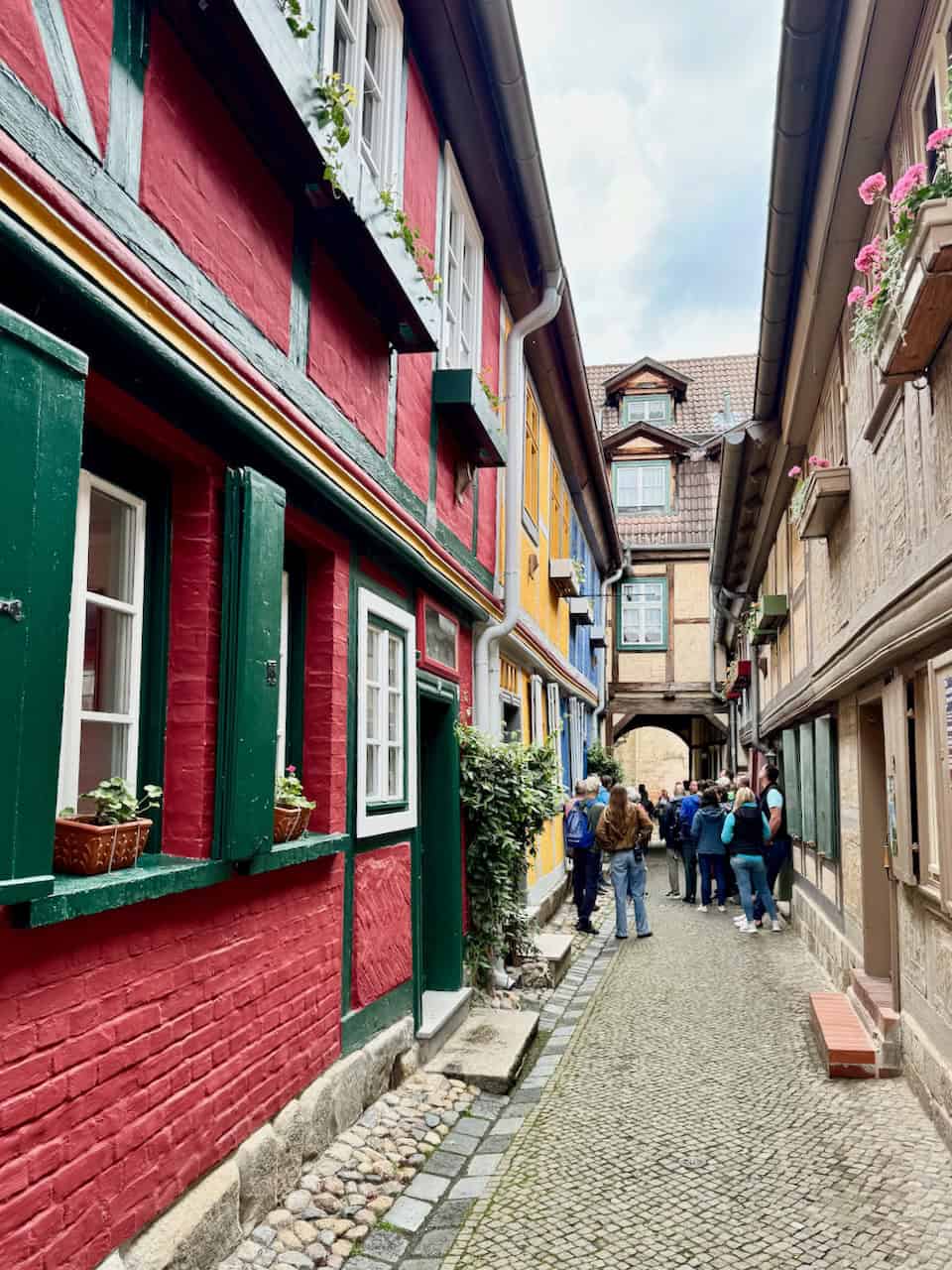
10. St. Blasii Church
St. Blasii is one of the oldest churches in Quedlinburg. Currently an event and cultural centre, the church has stonework from the 10th century. The church was redesigned in the Baroque style in the 18th century.
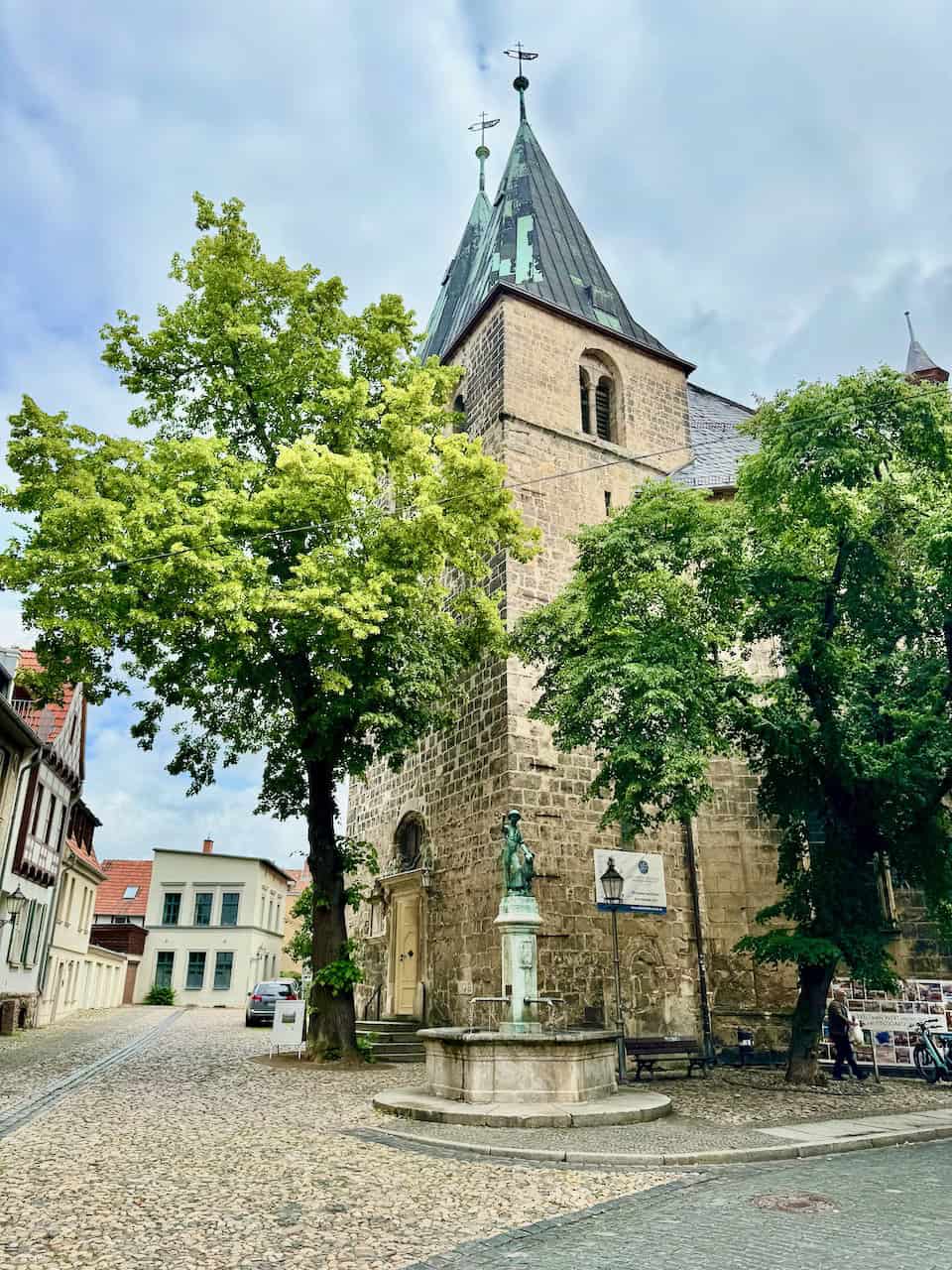
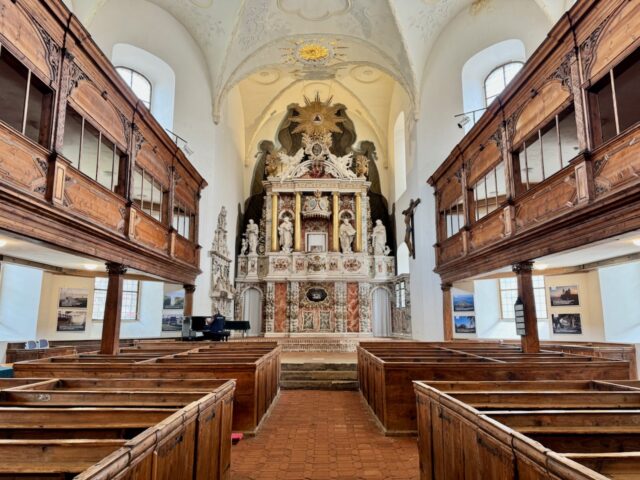
11. Münzenberg
To the west of the old town lies Münzenberg, a settlement within the walls of a former benedictine monastery. In this quaint walled settlement, you’ll find gorgeous half-timbered houses and the Münzenberg Museum. The abbey kitchen houses the oldest chimney in Germany!
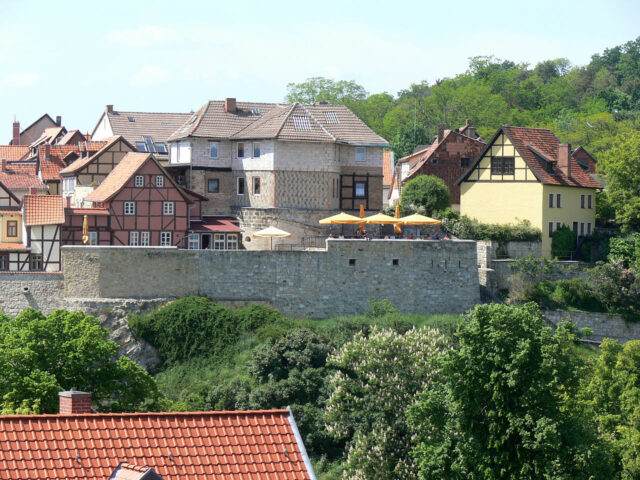
Quedlinburg is a treasure trove of history, culture, and architectural beauty. Its well-preserved buildings, rich cultural heritage, and the ongoing dedication to restoration make it a must-visit destination for anyone interested in experiencing the charm of a medieval German town. Whether you’re exploring the ancient abbey, wandering through the picturesque streets, or enjoying a local festival, Quedlinburg offers an enchanting journey through time.
It’s small enough to cover in a day. However, I would recommend spending at least a night in Quedlinburg, if only to experience the old town in the evening when the day-trippers have gone. Search for hotels in Quedlinberg (Booking.com). If you spend the night, don’t miss an evening walking tour with a night watchman.
How to get to Quedlinburg
Quedlinburg is located in central Germany at the northern edges of the Harz mountains. The closest airports are Leipzig (1-hour drive) and Hannover (1.5 hours by car). At either of these airports, you can hire a car and continue to Quedlinburg or take a train (2+ hours from Leipzig and 3+ hours from Hannover). It’s also possible to get to Quedlinburg from Berlin by train (3+ hours).

